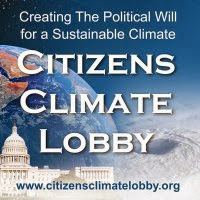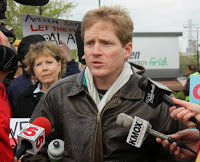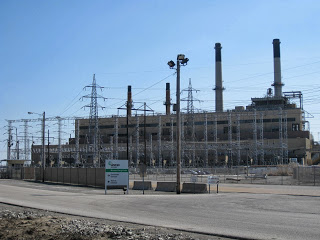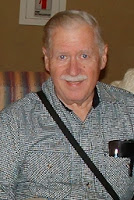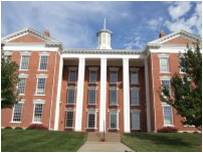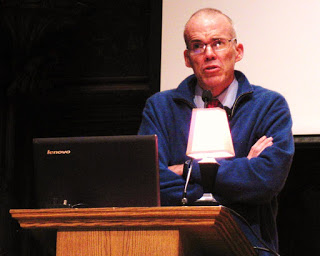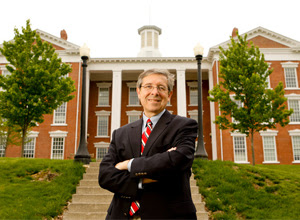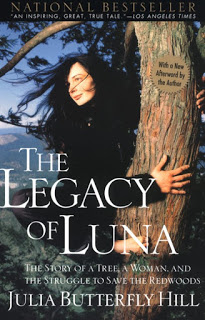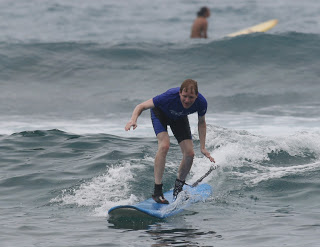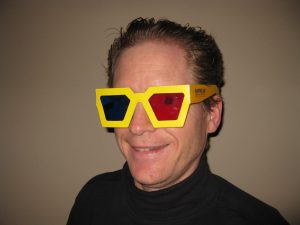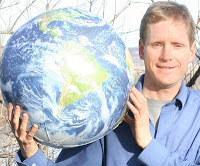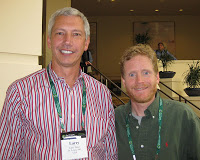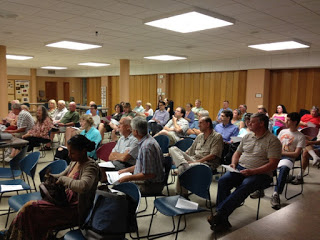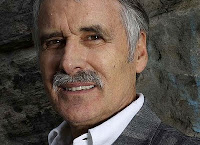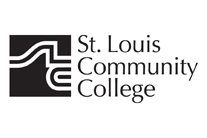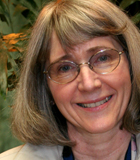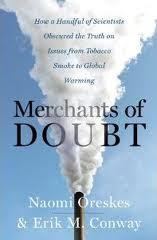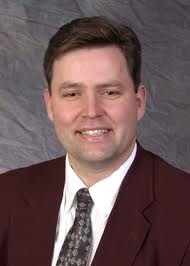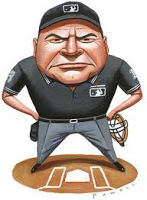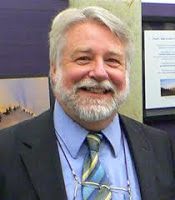 |
| Photo: http://www.petsadviser.com |
It’s Thanksgiving. What I am most thankful? Starting two climate change groups, one in St. Louis, Missouri and the other in southern Oregon. Even more, I am even more grateful for the leaders of these groups. Without Larry Lazar or Susan Bizeau, the truth is that I would have started ZERO climate change groups. The credit really goes to them for all their hard work. I was just extremely lucky to be at the right place and right time when they said YES.
LARRY LAZAR
Now I have blogged about Larry before in January 2012, as one of MY 12 CLIMATE CHANGE HEROES. Nothing has changed since then. To recap:
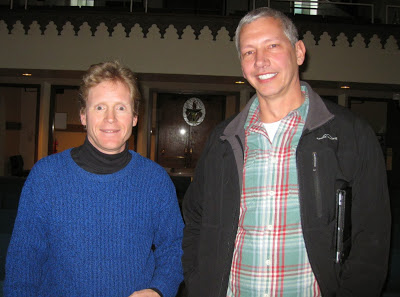 |
| Brian Ettling and Larry Lazar |
I first met Larry at a St. Louis Science Center lecture in April, 2011. We both attended a lecture by Jim Kramper, Warning Coordination Meteorologist with National Weather Service, on “Climate Change – What We Really Know.” We both knew we wanted to take some kind of action on climate change as soon as we met, but we were not sure what it should be.
We immediately stayed in contact on Facebook that summer when I returned to my seasonal ranger job at Crater Lake National Park, Oregon. That October, we started meeting regularly at Starbucks for breakfast to try to brainstorm ideas. I knew Larry was active in participating in meet up groups, such as Skeptical Society and The Issues You Don’t Talk About Cafe.
Climate Reality-St. Louis Meet Up
One morning at Starbucks, Larry announces to me “Brian, I am thinking about creating a climate change meet up group. Would you be interested in joining me?”
Unbeknownst to Larry, it was a huge dream of mine to establish a climate change group in St. Louis. I just had no idea how to do it. Thus, when Larry mentioned this, it was total music to my ears. I jumped at the idea. Larry immediately had me go to the www.meetup.com to get my own account and become the first member of the St. Louis Climate Reality Meet Up group. He let me get a sneak preview of the our meetup page. With climate change as my deep life passion but unsure how to create my own climate change group, Larry made me feel like a kid on Christmas morning opening up a big gift.
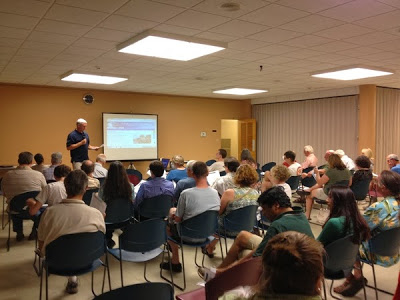 |
| Photo by Bart Pola, July 2012 meeting of Climate Reality-St. Louis Meet Up |
On the spot, Larry designated me as the “Co-Founder” of the group. This is a huge honor that I boast aboutto this day. However, I will gladly take any title Larry will give me. The truth is that I give Larry 95% of the credit for creating the title, meetup page, setting up the first meeting location, the corresponding facebook page, etc. I just happened to be at the right place at the right time.
In sense I think of Larry as the “mama” of the group and I am the “papa” of the group. Larry gave birth to the group, had to go through all the labor pains, child raising, etc. Like most men with unplanned or planned pregnancies, I just showed up at the right place and the right time. I think you get the idea.
Anyway, I have been blown away by the success of this group. Our group tries to meet once a month with a designated speaker for us to learn more about climate change. Because of my seasonal job at Crater Lake National Park, Oregon, I am gone six months of the year. Larry has done amazing job in my absence of holding the group together.
How has Larry kept the group together? He has scheduled some of the top climate scientists and communicators in America to speak to our group due to the modern miracle of Skype. As I like to joke, we can get the top speakers in the country chatting with us at home at their computer, even in their pajamas if they feel comfortable.
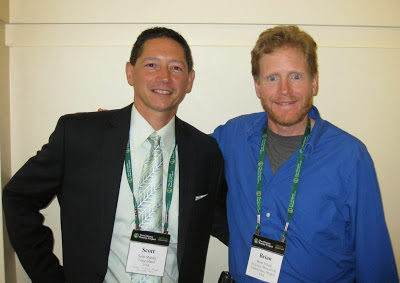 |
| Scott Mandia, first guest speaker for the Climate Reality-St. Louis Meet Up, with Brian Ettling |
Due to Larry’s persistence and great networking skills on Facebook, we have had national climate speakers such as Scott Mandia professor of physical sciences at Suffolk County Community College in New York and founder of the Climate Science Rapid Response Team, Penn State climate scientist and originator of the famous hockey stick graph Dr. Michael Mann, John Cook creator of the renowned website Skepticalscience, Peter Sinclair creator Climate Denial Crock of the Week, science comedian Brian Malow, Paul Beckwith who is an Arctic expert and climate researcher at the University of Ottawa, Ontario, etc.
On top of this, Larry and I invited local St. Louis environmental activists to speak to our group such as Climate Reality Project Leader Brian Bozak, Ed Smith Energy Director for Missouri Coalition for the Environment, Jill Miller an organizer with Renew Missouri, Arielle Klagsbrun an organizer with MORE (Missourians Organizing for Reform and Empowerment), Sara Edgar an organizer with Sierra Club’s Beyond Coal Campaign, and Carol Braford the St. Louis group leader with Citizens Climate Lobby.
 |
| Brian Ettling & Tanya |
As a side note, I met my girlfriend Tanya through our meet up as she was attending our meetings from January 2012. Hence, I also have Larry to thank for being an accidental matchmaker. Even more, my advice now for single people looking for to date: start a meet up group!
Citizens Climate Lobby
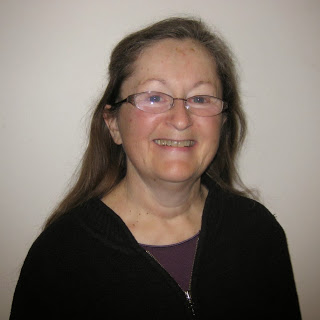 |
| Carol Braford |
Of all the organizers, Carol Braford was the most persistent with me that I should come to a monthly Citizens Climate Lobby conference call. I even blogged about Carol last January, Want to change the world? Be Persistent!
When I finally came to Carol and Tom Braford’s house in April, 2012 for a Citizens Climate Lobby (CCL) monthly conference call, I was extremely impressed CCL as soon the conference call started. I love their mission to empower individuals to effectively lobby their Congress to pass a carbon fee and dividend. My first thought was ‘CCL where have you been my entire life?’
All these groups from North America were calling into the conference call: Atlanta, New York, Chicago, San Diego, San Francisco, Toronto, Phoenix, Minneapolis, Albuquerque, Madison, Seattle, and new groups in Portland and Eugene, Oregon. STOP RIGHT THERE! I immediately thought: Why isn’t southern Oregon represented? There are so many environmental activists in Ashland, Oregon and the surrounding Rogue Valley. At the close of the meeting, I boldly told Carol that I was going to establish a CCL group in southern Oregon.
When I returned to Crater Lake National Park, Oregon, in mid May 2012, I persistently started networking to see who I could find in southern Oregon who could help me create a local CCL group. I mentioned this goal to a local friend in Ashland and she sent me a list of all her Facebook friends. I kept sending out messages on Facebook. After 50 messages, I lost track of how many I sent.
 |
| Brian Ettling with Amy Hoyt Bennett |
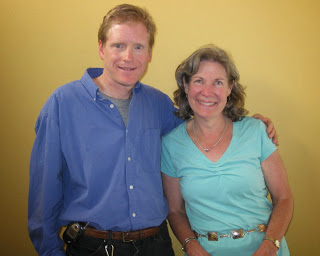 |
| Brian Ettling with Susan Bizeau |
When I returned to work at Crater Lake, Oregon in May 2013, I attended my first Citizens Climate Lobby meeting in Ashland, Oregon on Saturday, June 1st. It was held at the house of Brian & Paula Sohl, along with their daughter Hannah Sohl. I was blown away by the size of the group. There was 16 people at this meeting!
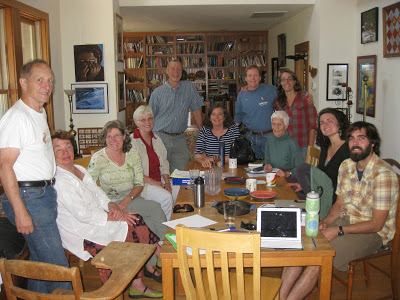 |
| The September meeting of the Southern Oregon Citizens Climate Lobby |
Even more surprising, after that meeting, Susan had the audacity for all of us to walk down the street to see if we could meet with Colby Marshall, Deputy Chief of Staff for local Congressman Greg Walden.
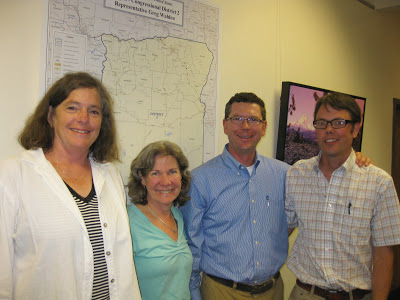 |
| Sherrill Rinehart, Susan Bizeau, Colby Marshall, and Dr. Julian Bell |
 |
| Susan Bizeau, Brian Etting, Dr. Julian Bell, Sherill Rinhart, Paula Sohl, and an exchange student from South Africa meeting in the Medford, Oregon field office of US Senator, Jeff Merkey |
Additional Update: Today, as I am getting ready to publish this blog, the St. Louis Post Dispatch published an opinion editorial about Climate Change by Larry Lazar. I am so proud of Larry for writing this oped.
Something in the weather tells us climate change is real by Larry Lazar
This is definitely an additional item to be thankful for this Thanksgiving.

